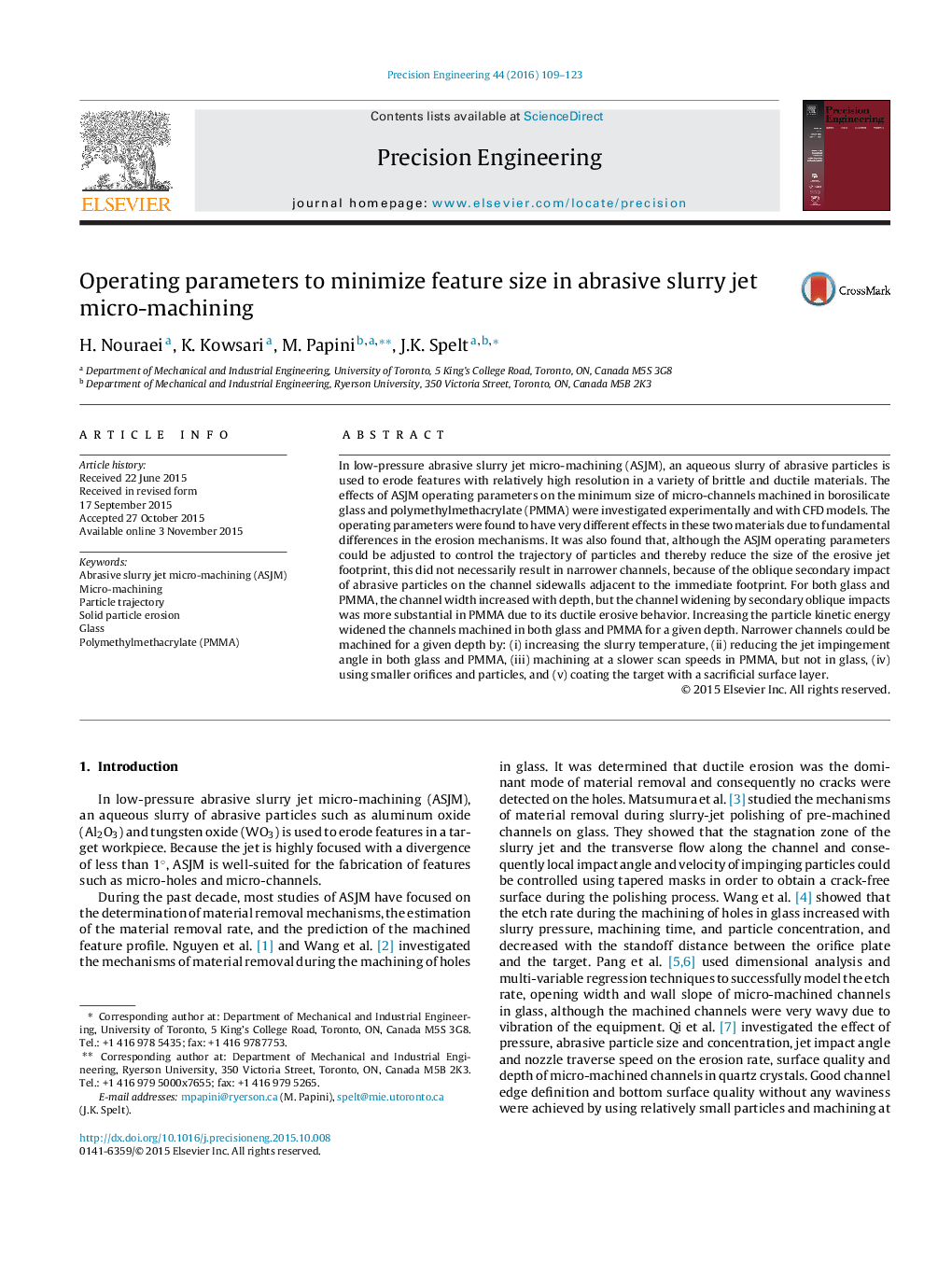| کد مقاله | کد نشریه | سال انتشار | مقاله انگلیسی | نسخه تمام متن |
|---|---|---|---|---|
| 803841 | 1467844 | 2016 | 15 صفحه PDF | دانلود رایگان |
• Investigation of the effect of ASJM operating parameters on channel width.
• Investigation on the mechanism of channel formation in glass and PMMA.
• Comparison of the effect of ASJM operating parameters in glass and PMMA.
• Production of narrower micro-channels for a give depth in glass and PMMA.
• Explanation of the observations based on the differences in slurry flow fields.
In low-pressure abrasive slurry jet micro-machining (ASJM), an aqueous slurry of abrasive particles is used to erode features with relatively high resolution in a variety of brittle and ductile materials. The effects of ASJM operating parameters on the minimum size of micro-channels machined in borosilicate glass and polymethylmethacrylate (PMMA) were investigated experimentally and with CFD models. The operating parameters were found to have very different effects in these two materials due to fundamental differences in the erosion mechanisms. It was also found that, although the ASJM operating parameters could be adjusted to control the trajectory of particles and thereby reduce the size of the erosive jet footprint, this did not necessarily result in narrower channels, because of the oblique secondary impact of abrasive particles on the channel sidewalls adjacent to the immediate footprint. For both glass and PMMA, the channel width increased with depth, but the channel widening by secondary oblique impacts was more substantial in PMMA due to its ductile erosive behavior. Increasing the particle kinetic energy widened the channels machined in both glass and PMMA for a given depth. Narrower channels could be machined for a given depth by: (i) increasing the slurry temperature, (ii) reducing the jet impingement angle in both glass and PMMA, (iii) machining at a slower scan speeds in PMMA, but not in glass, (iv) using smaller orifices and particles, and (v) coating the target with a sacrificial surface layer.
Figure optionsDownload as PowerPoint slide
Journal: Precision Engineering - Volume 44, April 2016, Pages 109–123
